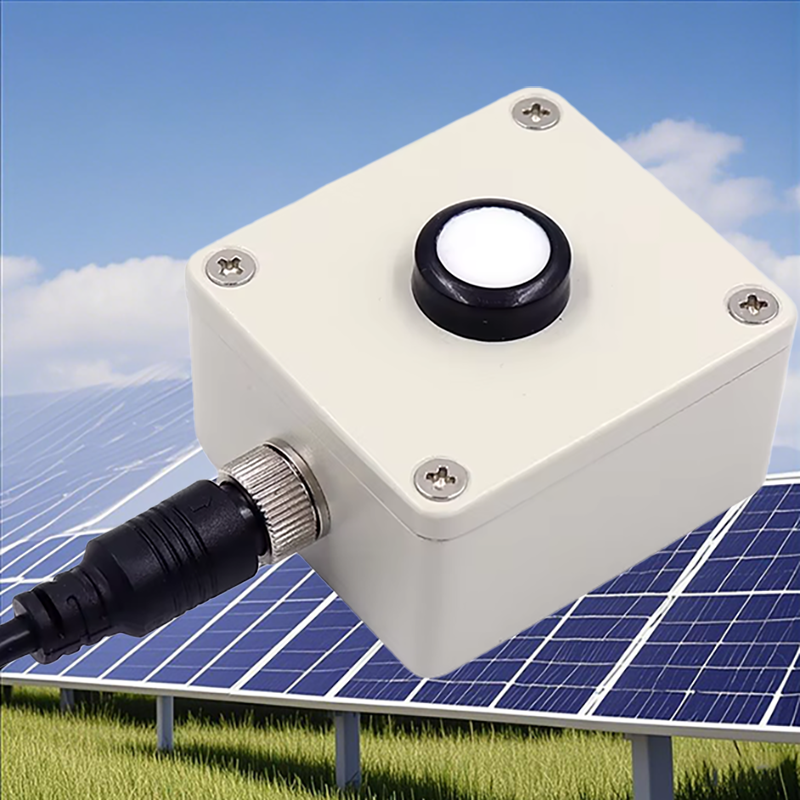Southeast Asia has become an important region for global agriculture, urbanization and energy production due to its unique climate and geographical features. In this region, sunlight is not only a key factor for plant growth, but also an important source of renewable energy (such as solar energy). In order to effectively manage and optimize this resource, the use of photoperiod and total radiation sensors has received increasing attention. This article will explore the application, effect and future development prospects of photoperiod and total radiation sensors in different regions of Southeast Asia.
1. Basic concepts of photoperiod and total radiation
Photoperiod refers to the length of time that sunlight shines on a certain place in a day, while total radiation refers to the total energy radiated by sunlight per unit area. Both indicators play a vital role in agricultural production, climate research and renewable energy development. Through photoperiod and total radiation sensors, researchers and farmers can monitor and analyze light conditions in real time to make scientific decisions.
2. Light characteristics in Southeast Asia
Southeast Asia includes Indonesia, Malaysia, Thailand, Vietnam, the Philippines and other countries. Its light characteristics have the following significant characteristics:
High illumination near the equator: Since most Southeast Asian countries are located near the equator, the light time is basically maintained at about 12 hours. Even in the rainy season, sunlight can penetrate through the clouds and provide sustainable light for crops.
Seasonal changes: Some regions (such as northern Thailand or the Vietnamese highlands) have obvious seasonal changes, and the duration of sunlight varies between the dry and rainy seasons. This feature has a direct impact on agricultural planting and breeding methods.
Geographical differences: Due to the complex terrain, the intensity and duration of sunlight vary from mountainous areas to coastal areas. In mountainous areas, shadows caused by clouds and high altitudes may lead to reduced sunlight time, while coastal areas are relatively sunnier.
3. Application of sunlight duration and total radiation sensors
In Southeast Asia, various industries have gradually recognized the importance of sunlight data, which has promoted the widespread application of sunlight duration and total radiation sensors.
3.1 Agricultural management
Crop growth monitoring: Farmers can use light sensors to monitor the light conditions required for crop growth in real time and adjust agronomic measures in time, such as reasonable fertilization, irrigation, and pest and disease management.
Planting decisions: Light data can help farmers choose crop varieties suitable for the local environment, thereby increasing yields and economic benefits.
3.2 Renewable Energy
Solar Power Generation: With the increasing attention paid to the use of solar energy, the duration of sunshine and total radiation sensors provide an important basis for the design and operation of solar photovoltaic systems. With accurate sunshine data, power companies and individual investors can better evaluate the feasibility and efficiency of solar power generation.
3.3 Climate Research
Climate Change Monitoring: Scientists use sunshine sensors to monitor long-term sunshine changes and provide data support for studying the impact of climate change. This is crucial for formulating regional climate adaptation strategies.
4. Sustainable Development and Challenges
Although the application prospects of duration of sunshine and total radiation sensors in Southeast Asia are broad, there are still some challenges:
Data Integration and Analysis: How to combine the data obtained by sensors with climate models, agricultural management and energy planning is one of the current research hotspots.
Technology Popularization: In some remote areas, the popularization of sensors and data access are still limited. It is necessary to improve the relevant knowledge of farmers and technicians through scientific and technological education and government subsidies.
Impact of Environmental Factors: Light conditions are not the only influencing factor. Environmental pollution, climate change, etc. can also affect the lighting effect. Therefore, it is crucial to comprehensively analyze various environmental factors.
Conclusion
The use of sunshine duration and total radiation sensors in Southeast Asia provides accurate data support for fields such as agriculture, energy and climate research. In the future, through technological innovation, data integration and education promotion, the region will be able to better manage light resources and promote sustainable development. With the continuous advancement of monitoring technology, more opportunities and application cases are expected to emerge, injecting new vitality into the economic and environmental development of Southeast Asia.
For more weather station information, please contact Honde Technology Co., LTD.
Tel: +86-15210548582
Email: info@hondetech.com
Company website: www.hondetechco.com
Post time: May-28-2025


